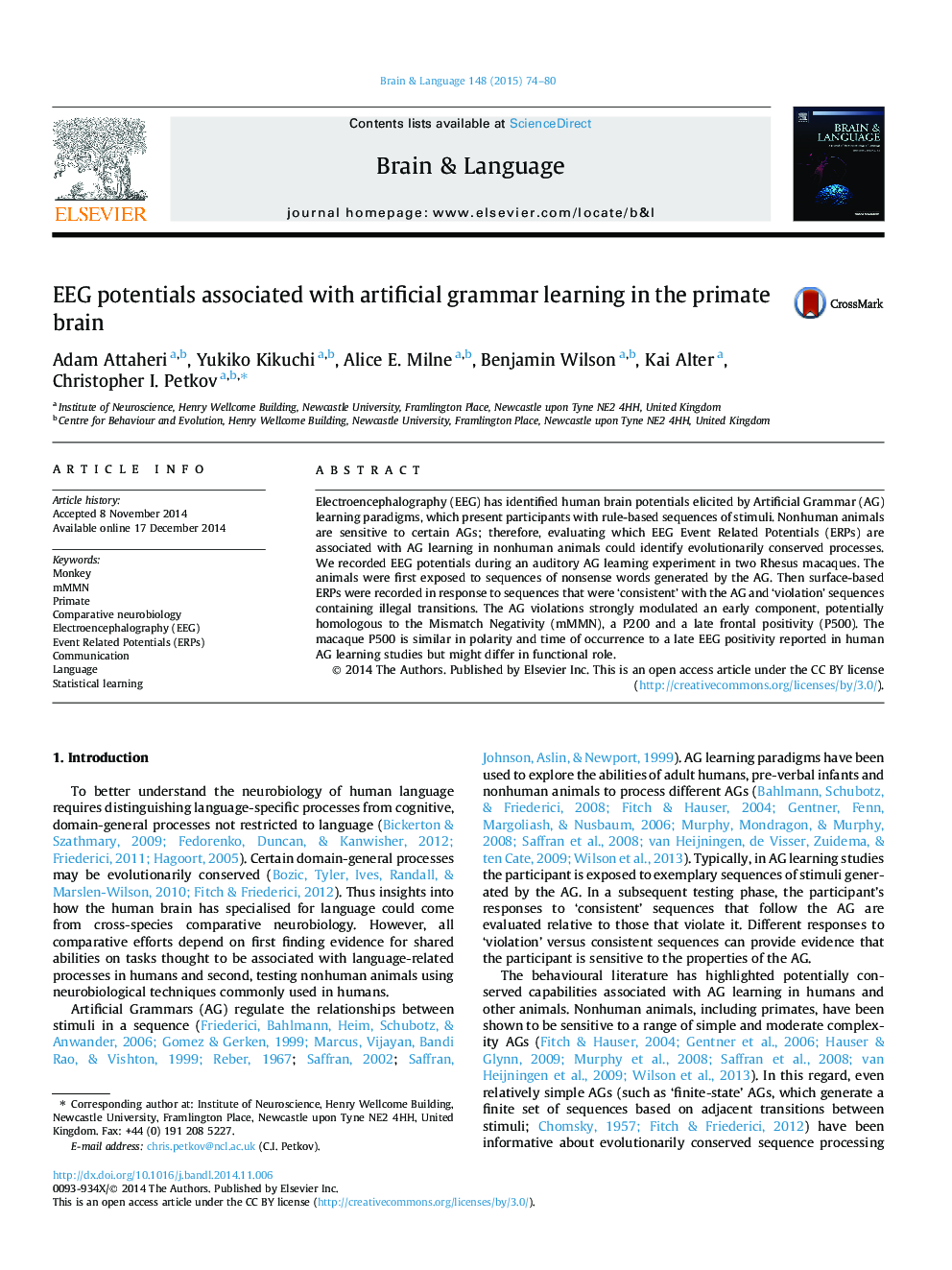| Article ID | Journal | Published Year | Pages | File Type |
|---|---|---|---|---|
| 7284199 | Brain and Language | 2015 | 7 Pages |
Abstract
Electroencephalography (EEG) has identified human brain potentials elicited by Artificial Grammar (AG) learning paradigms, which present participants with rule-based sequences of stimuli. Nonhuman animals are sensitive to certain AGs; therefore, evaluating which EEG Event Related Potentials (ERPs) are associated with AG learning in nonhuman animals could identify evolutionarily conserved processes. We recorded EEG potentials during an auditory AG learning experiment in two Rhesus macaques. The animals were first exposed to sequences of nonsense words generated by the AG. Then surface-based ERPs were recorded in response to sequences that were 'consistent' with the AG and 'violation' sequences containing illegal transitions. The AG violations strongly modulated an early component, potentially homologous to the Mismatch Negativity (mMMN), a P200 and a late frontal positivity (P500). The macaque P500 is similar in polarity and time of occurrence to a late EEG positivity reported in human AG learning studies but might differ in functional role.
Keywords
Related Topics
Life Sciences
Neuroscience
Biological Psychiatry
Authors
Adam Attaheri, Yukiko Kikuchi, Alice E. Milne, Benjamin Wilson, Kai Alter, Christopher I. Petkov,
